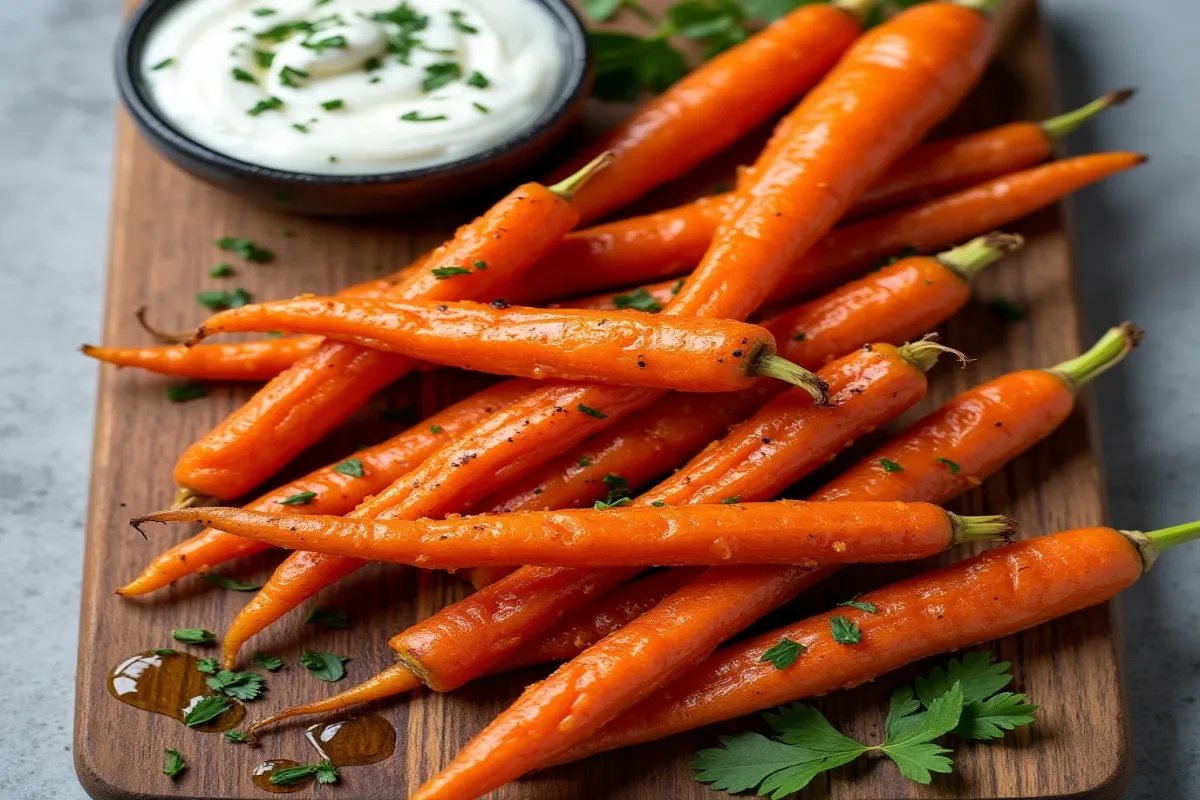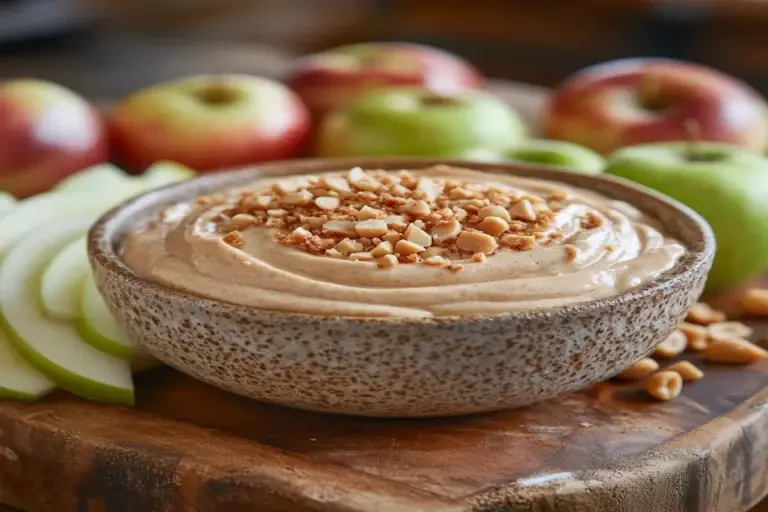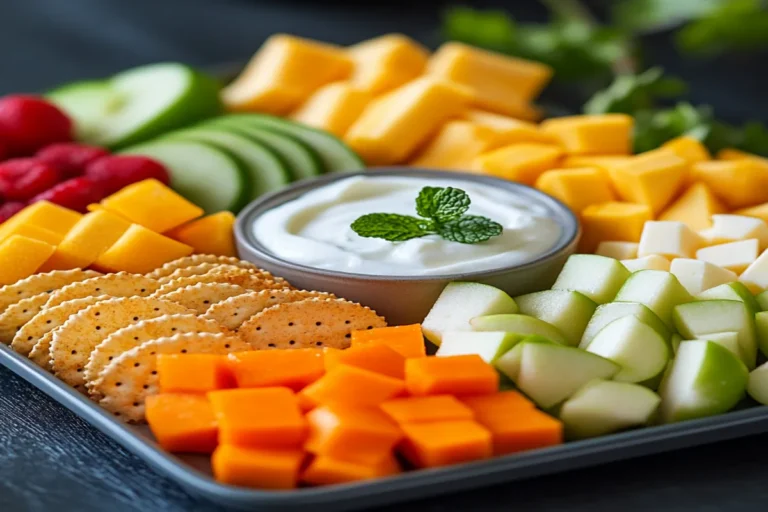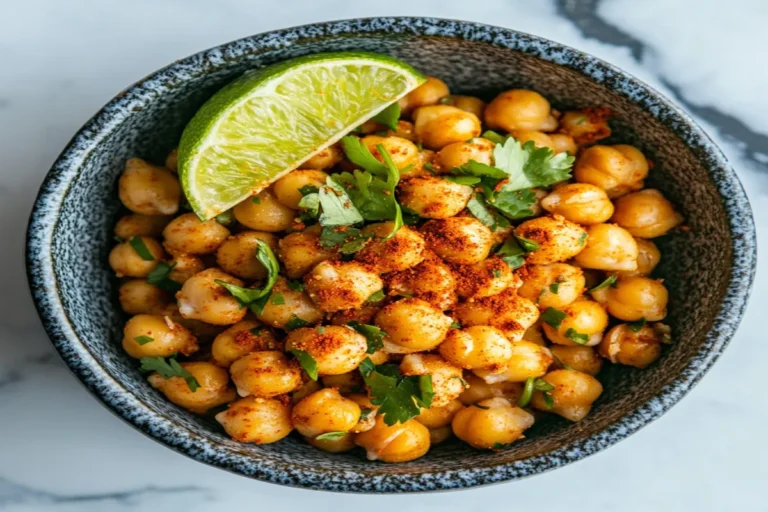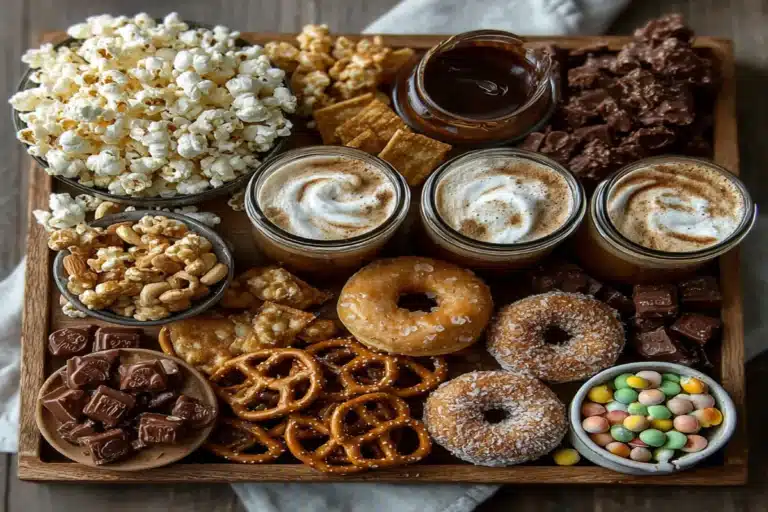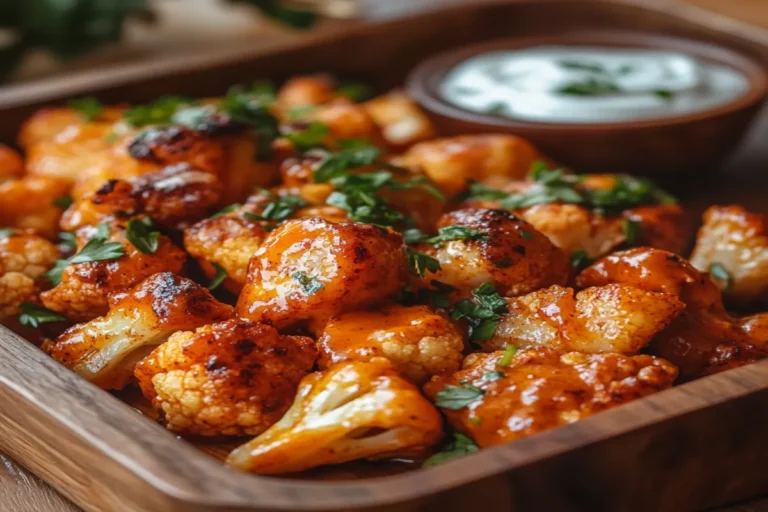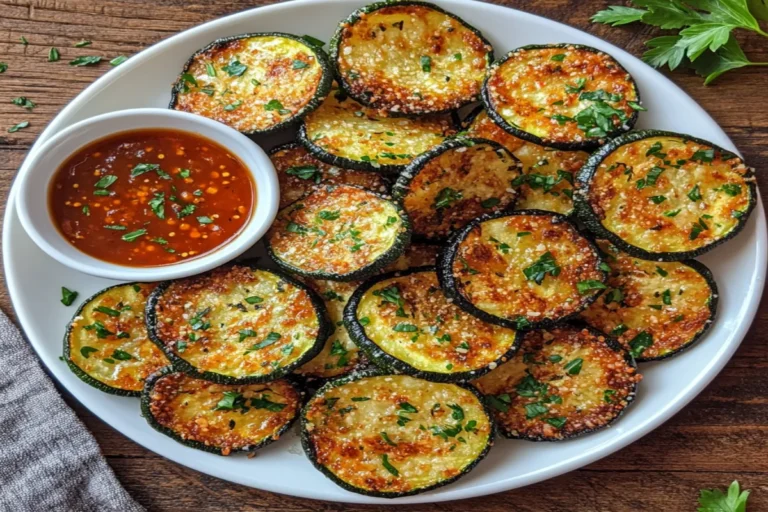Honey-Glazed Carrot Fries with Yogurt Dip – Healthy Snack
Introduction
In a world where traditional french fries reign supreme, carrot fries emerge as the vibrant, nutritious alternative your snack rotation has been craving. These aren’t just any vegetable sticks—they’re transformation on a plate, offering the satisfying crunch and comforting appeal of conventional fries while delivering a nutritional punch that regular potatoes simply can’t match.
The magic happens when these bright orange batons meet a glossy honey glaze, caramelizing in the oven to enhance their natural sweetness. Paired with a cool, tangy yogurt dip that balances the sweetness with a creamy counterpoint, this dish bridges the gap between indulgence and nourishment.
Whether you’re trying to sneak more vegetables onto your children’s plates or seeking a more wholesome alternative to satisfy your own snacking urges, these honey glazed carrot fries accomplish what few healthy recipes can—they make virtue delicious. The perfect blend of sweet and savory, crisp and tender, these fries prove that nutritious eating doesn’t require sacrifice, just a little culinary creativity.
Table of Contents
Why Choose Carrot Fries?
Carrots have long been celebrated for their impressive nutritional profile, but their potential as a french fry alternative often goes unrecognized. These vibrant root vegetables pack a powerful health punch, containing exceptionally high levels of beta-carotene—the plant pigment responsible for their bright color that converts to vitamin A in our bodies. Just one serving of these fries delivers over 200% of your daily vitamin A needs, supporting eye health, immune function, and skin integrity.
Unlike traditional potato fries, carrot fries offer significant fiber content—about 3 grams per serving—which promotes digestive health and creates a satisfying fullness that can help manage appetite. They also provide a natural sweetness that intensifies during roasting, as the high-heat cooking process caramelizes their natural sugars, resulting in a complex, almost candy-like flavor that many find irresistible.
The beauty of carrot fries extends to their dietary versatility. Naturally gluten-free, vegetarian, and paleo-friendly, they accommodate various dietary requirements without special adaptations. When paired with the right ingredients, as in this recipe, they can fit into most eating plans while delivering remarkable flavor that doesn’t feel restrictive. For those counting carbs, they contain roughly half the carbohydrates of potato fries, making them a smarter choice for blood sugar management.
Ingredients Breakdown
For the Carrot Fries:
Carrots (1 pound): Look for firm, bright-colored carrots with minimal cracks or splits. Larger carrots work best for this recipe as they’re easier to cut into uniform fry shapes. While any variety will work, standard orange carrots offer the sweetest flavor when roasted. Before cutting, scrub thoroughly—or peel if preferred—to remove any dirt and create a smooth surface for the glaze to adhere to.
Honey (2 tablespoons): Provides natural sweetness and helps create caramelization. Raw, unfiltered honey offers more complex flavor notes than processed varieties, though any type will work beautifully. The honey’s viscosity helps the glaze cling to the carrots while its sugars promote that desirable golden-brown exterior.
Olive oil (1 tablespoon): Creates the base for the glaze while helping the carrots develop a slightly crisp exterior. Extra virgin olive oil adds a subtle fruity note that complements the carrots’ sweetness, though light olive oil works well for those preferring a more neutral flavor profile.
Seasonings: A balanced combination of ½ teaspoon salt, ¼ teaspoon black pepper, ½ teaspoon paprika (sweet or smoked), and ¼ teaspoon ground cumin brings depth and complexity without overwhelming the natural carrot flavor. Adjust the proportions based on your preference for spice intensity.
For the Yogurt Dip:
Greek yogurt (½ cup): Provides a protein-rich, creamy base with pleasantly tangy notes. Full-fat varieties offer the richest texture, though 2% or even fat-free options work well for those watching their fat intake. The thicker consistency of Greek yogurt makes it ideal for dipping.
Lemon juice (1 tablespoon): Brightens the dip with citrusy acidity that cuts through the yogurt’s richness and complements the sweet carrots.
Garlic powder (¼ teaspoon): Offers gentle garlic flavor without the harshness of raw garlic, creating aromatic complexity that enhances the dip without overwhelming it.
Fresh herbs (1 tablespoon): Finely chopped dill, chives, or parsley add fresh flavor and visual appeal. Each herb brings its unique character—dill offers feathery brightness, chives contribute mild onion notes, and parsley provides clean, grassy freshness.
Optional add-ins: Consider incorporating ¼ teaspoon chili flakes for gentle heat, a pinch of ground coriander for citrusy undertones, or ½ teaspoon finely grated lemon zest for enhanced brightness. For a more complex flavor profile, a dash of za’atar or sumac introduces Mediterranean notes that pair beautifully with the carrots.
Step-by-Step Cooking Instructions Of
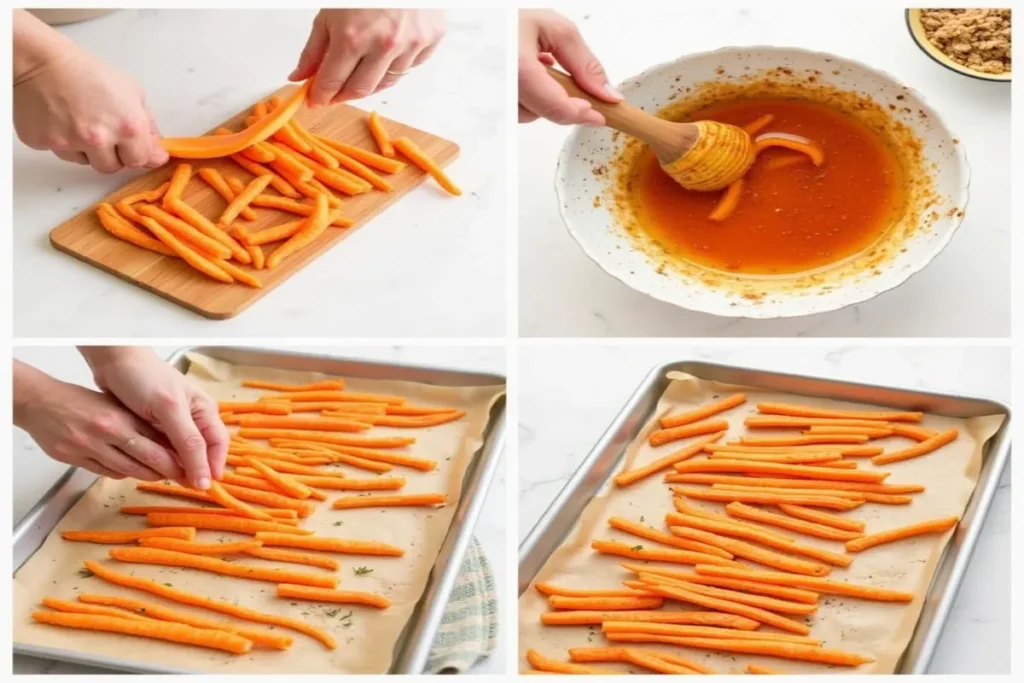
Preparation (15 minutes)
- Preheat your oven to 425°F (220°C). This high temperature is crucial for achieving caramelization while maintaining the carrots’ interior tenderness. If using an air fryer, preheat to 380°F (193°C).
- Prepare the carrots by washing thoroughly under cold water, scrubbing away any dirt or debris. For a more refined presentation, peel the carrots, though this is optional as much of the nutrition lies just beneath the skin. Trim off the ends and discard.
- Cut into fries by first halving each carrot crosswise, then slicing each half lengthwise into quarters or sixths, depending on thickness. Aim for pieces approximately ¼-inch thick and 3-4 inches long. Uniform sizing ensures even cooking—too thin, and they’ll burn; too thick, and they’ll remain undercooked in the center.
Creating the Honey Glaze (5 minutes)
- In a large mixing bowl, combine 2 tablespoons honey and 1 tablespoon olive oil. Whisk until fully integrated—the mixture should have a smooth, pourable consistency.
- Add seasonings to the honey-oil mixture: ½ teaspoon salt, ¼ teaspoon black pepper, ½ teaspoon paprika, and ¼ teaspoon ground cumin. Whisk again until spices are evenly distributed throughout the glaze.
- Toss carrots in glaze by adding the cut carrots to the bowl and using clean hands or tongs to ensure each piece receives an even coating. The goal is complete coverage without excess glaze pooling at the bottom of the bowl.
Cooking Process (20-25 minutes)
- Line a baking sheet with parchment paper or a silicone baking mat to prevent sticking. For extra crispiness, you can use a metal rack placed on the baking sheet to elevate the carrots and allow air circulation beneath them.
- Arrange the glazed carrots in a single layer, ensuring they don’t touch or overlap. Overcrowding leads to steaming rather than roasting, resulting in softer fries rather than ones with crisp edges.
- Bake in the preheated oven for 20-25 minutes, turning the carrots halfway through cooking. Look for golden-brown edges and fork-tender centers—the carrots should be easily pierced but still hold their shape.
- If using an air fryer, cook at 380°F for 12-15 minutes, shaking the basket halfway through cooking time. Work in batches if necessary to maintain the single layer arrangement essential for achieving crispness.
Preparing the Yogurt Dip (5 minutes)
- While the carrots roast, combine ½ cup Greek yogurt, 1 tablespoon fresh lemon juice, ¼ teaspoon garlic powder, and 1 tablespoon finely chopped fresh herbs in a small bowl.
- Whisk ingredients until smooth and well-incorporated. Season with salt and pepper to taste, starting with just a pinch of each and adjusting based on preference.
- Allow the dip to rest for at least 5 minutes before serving to let the flavors meld and develop. For enhanced flavor, prepare the dip up to 24 hours in advance and refrigerate in an airtight container.
Serving (5 minutes)
- Remove carrots from the oven when they’re golden at the edges and tender in the center. Allow them to cool for 2-3 minutes on the baking sheet—they’ll crisp up slightly as they cool.
- Transfer to a serving platter, arranging the fries in a loose pile or standing them upright in a serving vessel for dramatic presentation.
- Spoon the yogurt dip into a small serving bowl placed alongside the carrots.
- Garnish the platter with a light drizzle of honey, a sprinkle of fresh herbs, or a dusting of paprika for visual appeal and flavor enhancement.
- Serve immediately while the carrots are still warm for the best contrast between the hot fries and cool dip.
Tips for Perfect Carrot Fries
Consistent sizing is crucial. Take the extra minute to ensure your carrot sticks are uniform in thickness. This seemingly small detail makes the difference between perfectly cooked fries and a disappointing mix of burned and undercooked pieces. Aim for sticks approximately ¼-inch thick—thin enough to become tender but thick enough to hold their shape during cooking.
Space matters on the baking sheet. Resist the temptation to crowd the pan in the interest of saving time. When carrots touch during roasting, they steam each other where their surfaces meet, preventing proper caramelization. That golden-brown exterior isn’t just about appearance—it’s where the deepest flavor develops. Use two baking sheets if needed, rotating their positions halfway through cooking.
Consider a brief marinade. For intensified flavor, allow the carrots to sit in their honey glaze for 15-30 minutes before roasting. This rest period allows the carrots to absorb the sweet and savory notes of the glaze, resulting in more flavorful fries. Just be sure to drain any excess liquid before arranging them on the baking sheet to prevent steaming.
The air fryer advantage. While oven-roasting produces excellent results, the circulating hot air in an air fryer creates noticeably crisper carrot fries in less time. If using this method, reduce the temperature to 380°F and the cooking time to 12-15 minutes, shaking the basket halfway through. Work in batches rather than overfilling for the crispiest results.
Temperature matters. Starting with room-temperature carrots promotes more even cooking. Remove them from the refrigerator about 30 minutes before preparation if possible. Similarly, ensure your oven is fully preheated before introducing the carrots—a properly hot oven from the start helps develop that desirable caramelized exterior.
Nutritional Information
These honey glazed carrot fries with yogurt dip offer impressive nutritional benefits while satisfying snack cravings. Each serving (approximately ¼ of the recipe) contains:
Calories: 120-140 kcal, significantly lower than traditional french fries which typically contain 250-300 kcal per similar serving.
Macronutrients:
- Carbohydrates: 18g (including 11g natural sugars and 3g fiber)
- Protein: 4g (primarily from the yogurt dip)
- Fat: 5g (mostly heart-healthy unsaturated fats from olive oil)
Vitamins and Minerals:
- Vitamin A: Over 200% of the Daily Value, supporting vision, immune function, and skin health
- Potassium: 320mg (9% DV), essential for heart and muscle function
- Calcium: 80mg (8% DV), primarily from the yogurt component
- Vitamin C: 5mg (6% DV), supporting immune health and collagen production
- Iron: 0.5mg (3% DV), vital for oxygen transport in the blood
Dietary Considerations: This recipe naturally fits into vegetarian and gluten-free diets. For those following specific dietary patterns:
- Vegan: Substitute maple syrup for honey and use plant-based yogurt alternatives
- Paleo: The recipe is compliant as written
- Low-carb: While lower in carbs than potato fries, those on very low-carb diets should adjust portion sizes
- Allergens: Contains dairy in the yogurt dip; use non-dairy alternatives if necessary
The balance of complex carbohydrates, protein, and healthy fats makes this a more sustaining snack than most alternatives, helping maintain stable blood sugar levels and providing longer-lasting energy.
Serving Suggestions
Elevate Your Main Course by pairing these vibrant fries with complementary proteins. They shine alongside herb-roasted chicken thighs, where the honey glaze echoes the caramelization on the chicken skin. For a plant-based meal, serve them with a hearty chickpea burger, allowing the yogurt dip to double as a sauce for both components.
Create a Mediterranean-inspired mezze platter by arranging the carrot fries alongside hummus, olives, cucumber slices, and warm pita bread. This colorful spread makes for engaging, interactive dining perfect for casual gatherings or family movie nights. The varied textures and flavors encourage mindful eating and appreciation of simple ingredients.
Transform ordinary lunch boxes with these fries as a nutritious side. Unlike traditional potato fries, these carrot versions retain their pleasant texture even when cooled, making them ideal for packed lunches. Include a small container of the yogurt dip and watch previously neglected vegetables disappear.
For elegant entertaining, serve individual portions in small paper cones set within glass holders, reminiscent of Belgian frite presentations. This unexpected serving style elevates the humble carrot to sophisticated finger food status. Arrange several cones on a wooden board alongside varied dipping options for a conversation-starting appetizer display.
Enhance visual appeal by using rainbow carrots if available—purple, yellow, and white varieties alongside traditional orange create a stunning presentation that’s particularly appealing to children and food photography enthusiasts alike. The different colors actually offer slightly varied nutritional benefits and subtle flavor differences that make each bite interesting.
Variations and Customizations
Spice Enthusiast’s Version: Transform these sweet fries into a heat-lover’s dream by incorporating 1/2 teaspoon of cayenne pepper or Aleppo pepper flakes into the honey glaze. The sweet-heat combination creates an addictive flavor profile that’s particularly wonderful with a cooling dip. For even more complexity, add a pinch of smoked paprika to introduce subtle smokiness alongside the heat.
Herb-Infused Elegance: Elevate the aromatic profile by adding 1 tablespoon of finely chopped fresh rosemary or thyme to the glaze before roasting. These woody herbs stand up beautifully to high-heat cooking, infusing the carrots with their essential oils during the roasting process. The result is a sophisticated flavor that transforms the humble carrot into a restaurant-worthy side dish.
Global Flavor Journeys: Adapt the basic recipe to explore international flavor profiles:
- For Middle Eastern flair, incorporate 1 teaspoon of za’atar blend into the honey glaze and serve with a tahini-based dip
- Create an Indian-inspired version by adding 1/2 teaspoon of garam masala to the glaze and serving with a cumin-spiced yogurt raita
- For Japanese influence, glaze with a mixture of miso paste, honey, and sesame oil, then sprinkle with toasted sesame seeds before serving
Alternative Dipping Options: While the yogurt dip provides a classic companion, consider these alternatives for different occasions:
- Creamy avocado-lime dip (blended ripe avocado, lime juice, cilantro, and salt)
- Honey-mustard sauce (equal parts Dijon mustard and honey with a splash of apple cider vinegar)
- Spiced hummus (traditional hummus blended with roasted red peppers or harissa paste)
- Cashew-based vegan “sour cream” with chives and lemon zest
Sweet Dessert Transformation: For an unexpected treat, emphasize the carrots’ natural sweetness by glazing with maple syrup, cinnamon, and a touch of vanilla extract. Roast until caramelized and serve with a dip made from Greek yogurt sweetened with honey and orange zest—a healthier reimagining of carrot cake flavors in handheld form.
Frequently Asked Questions
Can I use baby carrots instead of full-sized ones?
Yes, baby carrots can be substituted for convenience, though they typically contain more moisture and may not develop quite the same level of caramelization. When using baby carrots, slice them lengthwise into halves or quarters depending on thickness, reduce the cooking time by about 5 minutes, and watch carefully to prevent burning. The flavor will be slightly milder and sweeter than with standard carrots.
What’s the best way to store leftovers?
Allow the carrot fries to cool completely before transferring to an airtight container lined with paper towels to absorb excess moisture. Store in the refrigerator for up to 3 days. For best texture when reheating, place them on a baking sheet in a 375°F oven for 5-7 minutes until warmed through and re-crisped. Microwaving will warm them but sacrifices texture. Store the yogurt dip separately in its own sealed container.
Can I prepare these ahead of time for a party?
Absolutely! Cut the carrots and prepare the glaze up to 24 hours in advance, storing them separately in the refrigerator. The yogurt dip can also be made a day ahead—in fact, it actually improves as flavors meld overnight. When ready to serve, toss the carrots in the glaze and roast fresh. For partial make-ahead, you can roast the carrots up to 2 hours before serving and keep them at room temperature, then reheat for 3-5 minutes in a hot oven just before guests arrive.
Can I use something besides honey for the glaze?
Several alternatives work beautifully in place of honey:
- Maple syrup offers a more complex, woodsy sweetness
- Agave nectar provides clean sweetness with a thinner consistency
- Apple or pear butter creates a fruit-forward variation
- Brown sugar dissolved in a bit more olive oil works in a pinch
Each alternative will slightly alter the flavor profile and caramelization properties, so you may need to adjust cooking times accordingly. Maple syrup tends to caramelize faster than honey, so check for doneness a few minutes earlier.
How can I make these carrots crispier?
For maximum crispness, try these professional techniques:
- Soak cut carrots in cold water for 30 minutes, then pat thoroughly dry before glazing
- Use a metal baking rack on top of your baking sheet to promote air circulation
- Increase oven temperature to 450°F but reduce cooking time to 15-20 minutes, watching carefully
- Avoid parchment paper, which can trap steam, using a well-oiled baking sheet instead
- For the ultimate crisp texture, par-roast for 15 minutes, cool completely, then finish at high heat just before serving
Remember that carrots have higher water content than potatoes, so they’ll never achieve quite the same crispness as traditional french fries—their charm lies in the caramelized exterior giving way to a tender, sweet interior.
Conclusion
These honey glazed carrot fries represent the best of intuitive, nourishing cooking—transforming an everyday vegetable into something crave-worthy through simple techniques and thoughtful flavor pairings. The natural sweetness of carrots, enhanced by honey and gentle spices, creates a satisfying alternative to traditional fries without sacrificing the joy of the eating experience.
What makes this recipe particularly valuable is its adaptability. Whether you’re cooking for picky children, health-conscious adults, or guests with dietary restrictions, these vibrant orange batons with their cool, creamy dip partner satisfy across demographics. They prove that nutritious eating needn’t feel like compromise—sometimes, it can actually be the more delicious choice.
I encourage you to make this recipe your own. Experiment with the spice combinations, try different herbs in the yogurt dip, or explore the suggested variations to find the version that becomes your signature. The most successful recipes evolve through personal touches and adaptations to individual tastes.
Share your experience in the comments below—did you try a particular variation? Did the carrots win over vegetable skeptics in your household? Your insights might just inspire another reader’s culinary adventure. And don’t forget to subscribe for more recipes that reimagine familiar ingredients in surprising, delightful ways.

